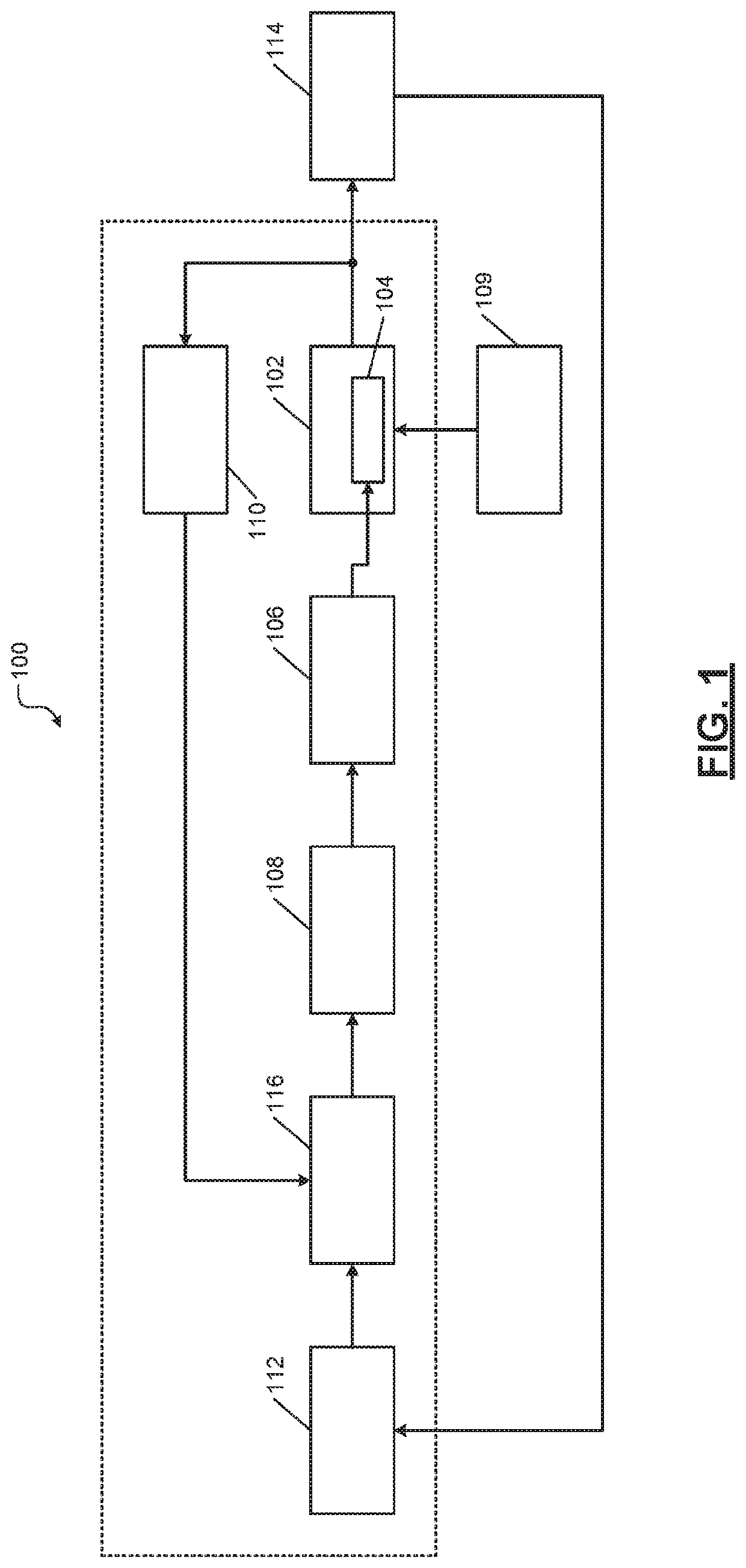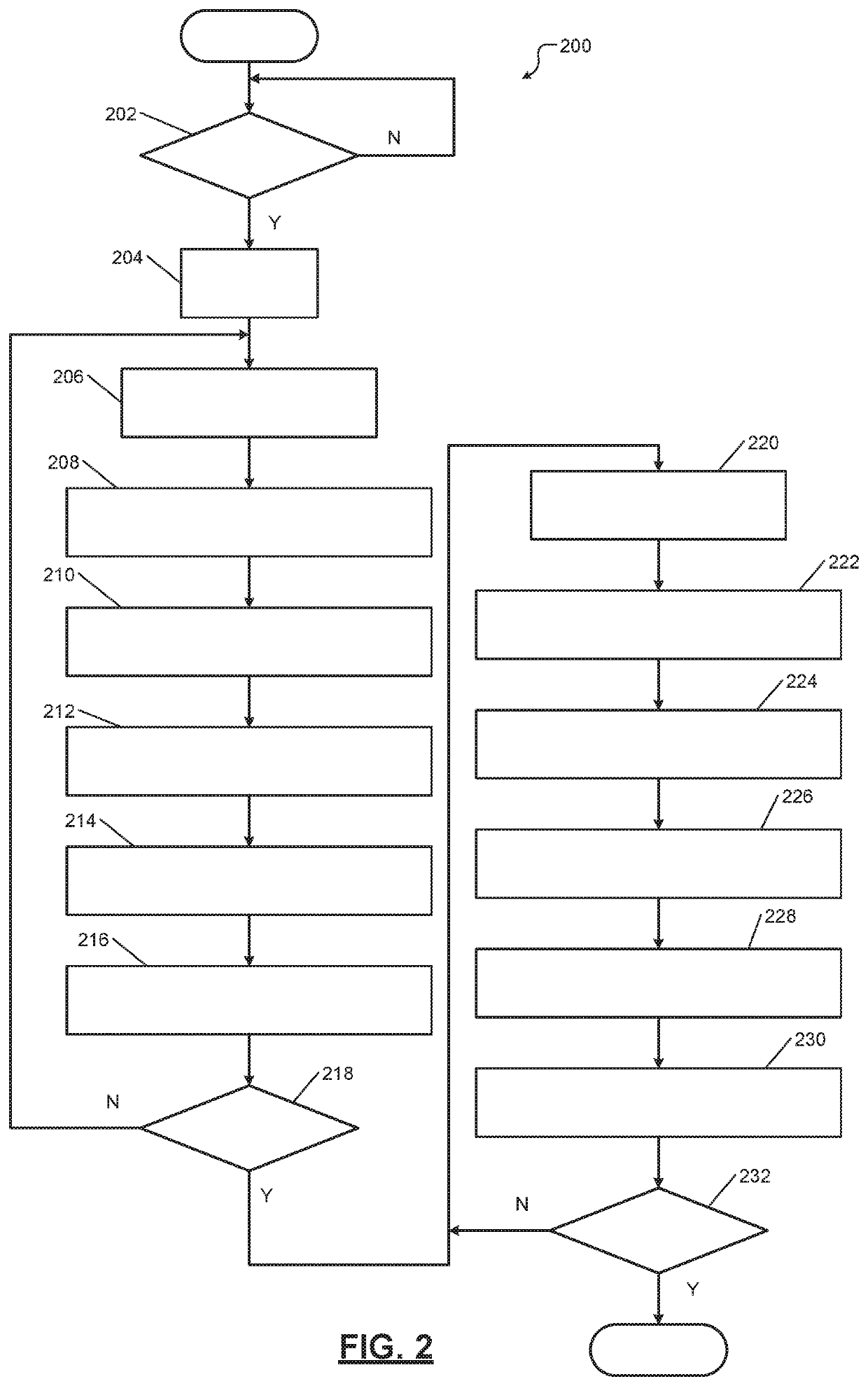Varying closed loop gain control to constrain ramp rate of oxygen sensors in exhaust systems
a technology of exhaust system and ramp rate, which is applied in the direction of electric control, machines/engines, mechanical equipment, etc., can solve the problems of increasing fuel consumption and emissions
- Summary
- Abstract
- Description
- Claims
- Application Information
AI Technical Summary
Benefits of technology
Problems solved by technology
Method used
Image
Examples
Embodiment Construction
[0032]O2 and WRAF sensors need to have a constrained temperature increase rate to prevent the sensor from breaking. The proposed method changes the gains of the heater control to constrain the temperature increase rate to a maximum rate recommended by sensor manufacturer. The calibrated gains of the O2 sensor heater control are automatically constrained using closed loop feedback during warm up period of the sensor. No additional gain calibration required for the warm up period, and the method uses sensor feedback to ensure that the constraint is not violated. In addition to preventing breakage, the method decreases the O2 and WRAF sensor light off time for better emissions, where light off time is time taken by the sensor to reach a light off temperature, which is a temperature at which the sensor is sufficiently warm and usable.
[0033]To decrease the light off time, many newer sensors have lower mass and use higher heater power, which increases the thermal ramp rate of the sensors,...
PUM
 Login to View More
Login to View More Abstract
Description
Claims
Application Information
 Login to View More
Login to View More - R&D
- Intellectual Property
- Life Sciences
- Materials
- Tech Scout
- Unparalleled Data Quality
- Higher Quality Content
- 60% Fewer Hallucinations
Browse by: Latest US Patents, China's latest patents, Technical Efficacy Thesaurus, Application Domain, Technology Topic, Popular Technical Reports.
© 2025 PatSnap. All rights reserved.Legal|Privacy policy|Modern Slavery Act Transparency Statement|Sitemap|About US| Contact US: help@patsnap.com


